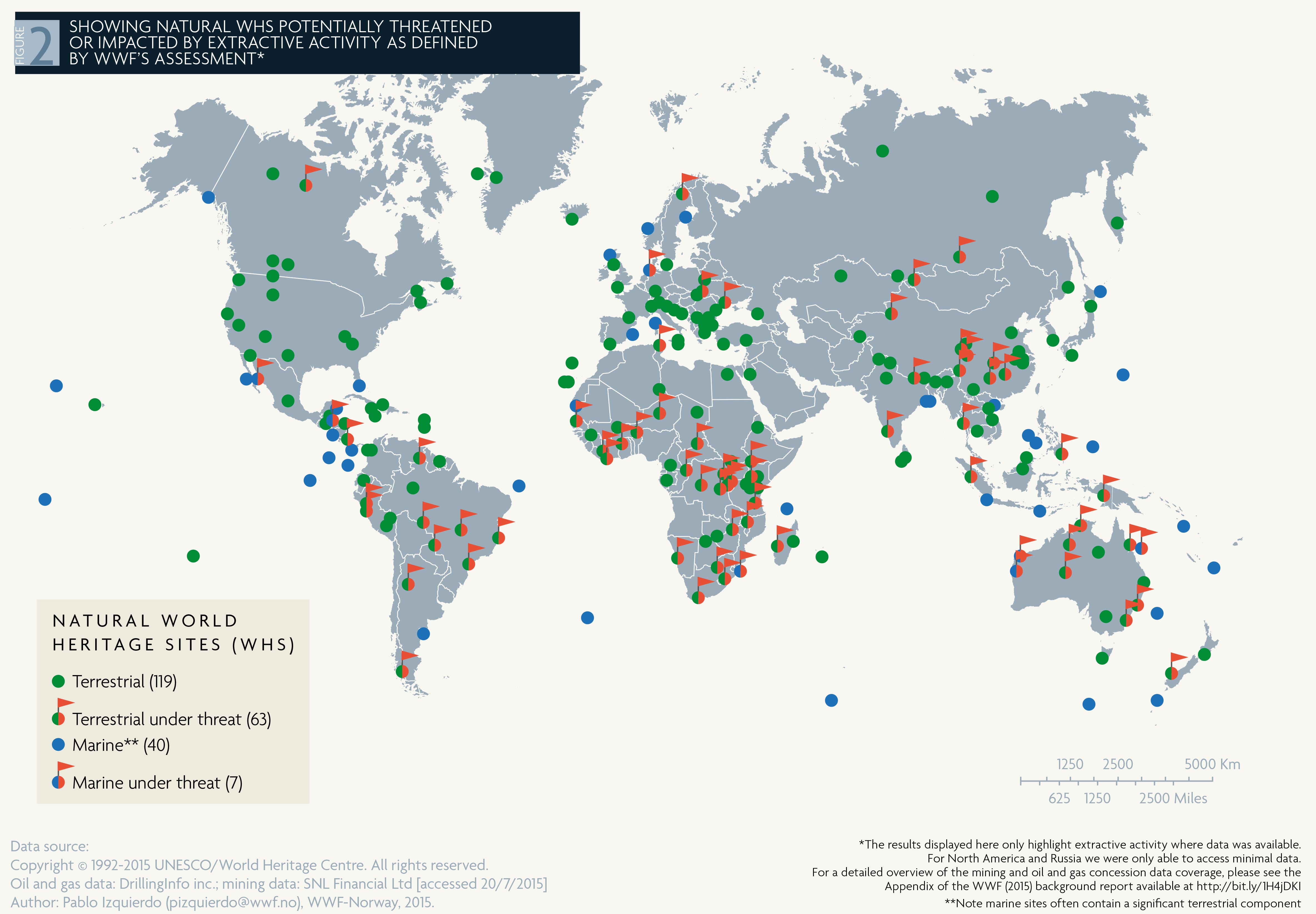Guiding investors to protect World Heritage Sites
WWF-SIGHT recently collaborated with investors on a joint report for financial institutions, highlighting the threat to natural World Heritage Sites from extractives and the role that institutional investors can play in their protection. The report is based on evidence from WWF’s own analysis and mapping of extractives concession overlaps using WWF-SIGHT.
The July 2015 assessment found that around one third of natural World Heritage Sites were potentially threatened by extractives activities (oil, gas and mining) and that the potential threat in Africa with 61% is particularly high. It called on institutional investors to require companies that they already invest in or intend to invest in, to disclose any ownership of concessions over or near WHS and to work with their investor peers to call for no-go in World Heritage Sites.

Zoomable map of the Potentially World Heritage Sites threatened by extractives activities.
Key recommendations to investors
This report recommends that investors, where possible and appropriate, engage with the issue by:
1) Ensuring they are aware of whether any extractive companies in which they invest (or plan to invest in) currently own concessions or operate within or adjacent to natural WHS, or if they plan to do so in the future.
2) Directly engaging extractive companies in their portfolio that are active in, or adjacent to, natural WHS to encourage them to change their strategy, or to consider divestment if insufficient
progress is made.
3)Disclosing when they have divested and the reasons for divestment.
4) Engaging with the extractive sector at industry level to encourage improved disclosure on the issue and the wider adoption of ‘no go’ and ‘no impact’ commitments for natural WHS.
5) Collaborating with other investors to address the issue collectively.
6) Encouraging the disclosure of extractives concessions data either publicly or in widely used financial data sources.
Interactive map of the Natural and Mixed World Heritage Sites around the World (Click on top left of the map for more info)
You can also read the background and methods report Global assessment of extractives activity within natural World Heritage Sites.